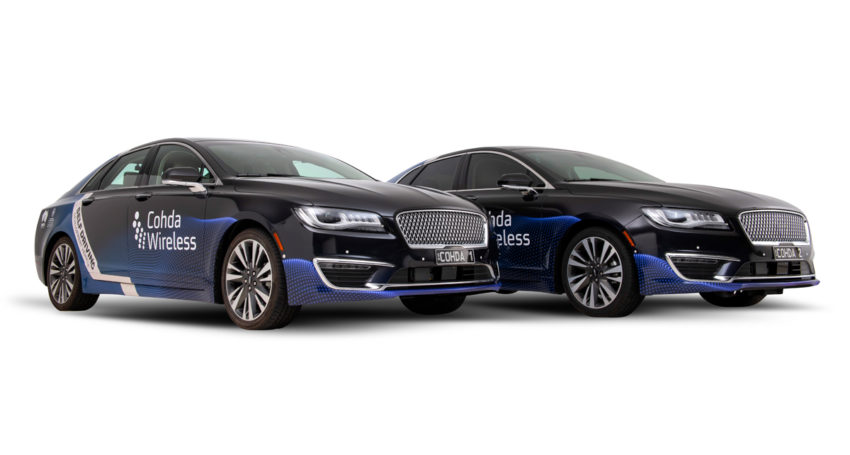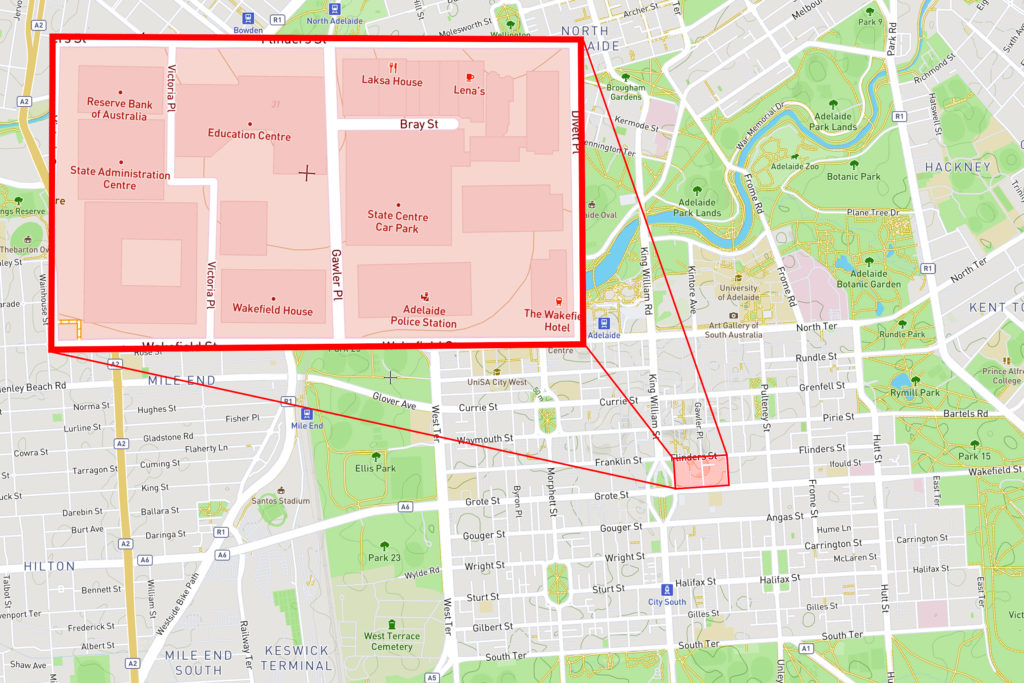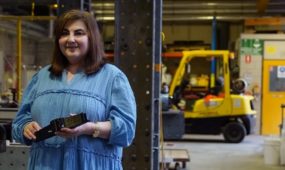Autonomous car trial on city streets gives technology the edge over human drivers
Technology
Cohda Wireless has demonstrated the ability of its driverless car technology to see around corners and locate other vehicles in an ‘urban canyon’ as part of a world-first trial in South Australia.

Sign up to receive notifications about new stories in this category.
Thank you for subscribing to story notifications.

The trial, conducted in a two-block section in the centre of the Adelaide CBD, revealed how smart connected vehicles can detect and respond to risky situations more effectively than a human in a scenario thought to be commonplace in built-up city areas.
During the trial, two vehicles approached a four-way intersection at right angles to each other. Tall buildings on each corner of the intersection obstructed the view of the other approaching car.
Car 2, driven by a human, fails to adhere to the red-light signal and approaches the intersection at speed, intending to ‘run’ the red light. Car 1, a connected autonomous vehicle, is approaching the intersection from another direction and intends to proceed through the intersection on the green light.
In a real-life scenario, there would be a risk of collision as human drivers will invariably proceed through an intersection when the light is green, confident that other road users will obey the traffic signals. In an instance where Car 2 disobeys the traffic signal and Car 1 is unable to see the approaching danger, due to visibility being obstructed by buildings or other infrastructure, a collision is likely.
Cohda Wireless’s Chief Technical Officer Professor Paul Alexander said vehicles connected using Cohda’s V2X (Vehicle-To-Everything) technology detect the other car’s movement and avoid the potential collision well in advance of it actually happening.
“We demonstrated that when vehicles are connected to each other using our smart V2X technology, Car 1, the connected autonomous vehicle, would detect that Car 2 is approaching the red light at speed and is probably not going to stop,” he said.
“This allows the connected autonomous vehicle to pre-emptively identify and respond to the threat by slowing down and stopping.
“Cohda’s V2X technology allows vehicles to speak to each other to extend their perception horizon.
“The technology provides the vehicle with an awareness of its environment and risk factors associated with it, consistently and accurately up to 10 times per second, enabling it to make decisions that a human being would not be capable of making as the driver of the vehicle.”
Cohda Wireless, a global leader in driverless car technology, is headquartered in Adelaide and has offices in Europe, the United States and China.
In June this year, the company took ownership of two specially modified vehicles from the United States, which it is using in advanced trials of its world-leading V2X (Vehicle-To-Everything) technology.
The two Lincoln MKZ sedans have been fitted with Cohda Wireless software and V2X on-board units and an array of gadgets and devices to enable them to drive autonomously. The vehicles also have the ability to communicate with each other and transport infrastructure such as traffic lights.

The two-block trial area in downtown Adelaide.
“Our goal today was not only to demonstrate the efficacy of our technology in enabling vehicles to communicate with each other but also to do so in a city environment where so-called urban canyons significantly affect the ability of systems reliant on Global Navigation Satellite Systems (GNSS) to achieve accurate positioning,” said Prof Alexander.
“Flinders Street in Adelaide is one such urban canyon where positioning through GNSS can be off by up to 40 metres, but with our V2X-Locate technology, positioning accuracy is improved to within a metre.”
Cohda Wireless demonstrated its V2X-Locate system in a 2017 trial in New York City where it repeatedly achieved sub-metre accuracy while driving along Sixth Avenue, which has the tallest buildings in the Big Apple. Comparably tested GPS-based systems were as much as tens of metres off-course, at times showing cars driving through buildings.
Cohda’s V2X technology underpins and complements other technology used by autonomous vehicles such as cameras, sensors, radars and lidars by enabling cooperative perception.
“The role of technology in making our roads safer is probably not generally understood but we hope that this demonstration has helped to prove that with the appropriate technology and infrastructure, connected self-driving vehicles deployed on our streets are at less risk than vehicles controlled by human beings,” Prof Alexander said.
Cohda Wireless last year received $2 million grant from the South Australian government to purchase, fit out and test the two cars on Adelaide’s city streets and other urban roads. Last month the State Government granted Cohda Wireless permission to trial autonomous vehicles in the central business district of the state’s capital until 30 June 2020.
Sunday’s first trial will no doubt be a major talking point at this week’s International Driverless Vehicle Summit, which is also being held in Adelaide.
The conference program will showcase Australian and International experts developing driverless vehicle technologies to an audience of over 300 delegates from across Australia and the world. International speakers from the United Kingdom, United States, New Zealand, Singapore, France and Germany will headline the Adelaide Convention Centre conference.
The trials and conference further positions Adelaide and South Australia at the forefront of autonomous vehicle technology and innovation.
In 2016, South Australia became the first state in the country to introduce laws allowing for trials of driverless cars on open public roads.
The V2X-Radar technology has also been trialled in a closed session on a highway on the outskirts of Adelaide.
Jump to next article



